6 Exercises For Plantar Fasciitis: Speed Up Recovery And Get Back On The Track
Getting up after sitting for a while, only to be struck with pain in your heel, is something that many athletes had to face in the past. The pain doesn’t just get worse in this case, but you may also struggle to walk. One common cause behind this type of pain among athletes and runners include plantar fasciitis. The condition causes pain and swelling in the plantar fascia, and without proper remedies, the symptoms can get worse. We’ll take a look at the best exercises for plantar fasciitis that helps with recovery.
What Is Plantar Fasciitis?
Plantar fasciitis refers to a specific injury that affects your plantar fascia. The connective tissue is similar to a ligament and helps to provide support and connectivity for bones in your feet. It also does the same for your heels.
Overworking the tissue or experiencing a direct impact can result in the development of plantar fasciitis. The condition is characterized by pain and inflammation. It’s also possible to experience stiffness in your heel and foot when affected by this injury. The severity of the pain you experience depends on how serious the injury is. Some cases only cause mild pain, but there are scenarios where people have pain to the point where it interferes with their ability to move around comfortably.
What Are The Best Exercises For Plantar Fasciitis?
There are different ways to deal with plantar fasciitis. Usually, a couple of at-home strategies work really well. This includes ice packs and a lot of rest. You can also wear a brace if the injury is more serious and take over-the-counter medication to help with pain and inflammation.
In addition to these strategies, it’s important to consider doing some exercises for plantar fasciitis. There are many exercises that can help to target muscles, tendons, and other tissues in your feet.
1. Wall Calf Stretch
Let’s start with some stretching exercises for plantar fasciitis. When you have this injury, it’s important to ensure you are gentle on the plantar fascia. This can help to ensure you do not injure it further but still gives you an opportunity to start strengthening the muscles in this area.
Stretches are a great way to start the recovery process. The wall calf stretch is the first option in our list of exercises for plantar fasciitis.
Here are the steps to take for this exercise:
- Stand against a wall. Place your hands on the wall and lengthen your arms

- Pull the affected leg backward while bending the other leg forward toward the wall.
- Now, bring the foot that is bent forward, but keep the heel of the foot with plantar fasciitis planted on the floor.
- Once you are in this position, hold it for about 15 seconds at first, then return to the starting position.
As you work your way toward strengthening your plantar fascial and other tissues in the surrounding area, you can gradually increase the duration you hold the stretch for.
2. Heel Raises
We’re still on stretching exercises for plantar fasciitis, and this one also targets your heel. The heel raise is a great option for stretching muscles, tendons, and other tissues in your heels, and works on your feet too. With this said, you should start out with very slow movements at first. This can help to prevent stretching your plantar fasciitis and other tissues.
If you have a more significant level of pain in your heel, make sure you stand somewhere with support that you can hold onto.
Here are the steps to take if you want to perform these exercises for plantar fasciitis:
- It’s best to choose a step where you can keep the balls of both feet stable, with an
 opening at the back. Hold onto the rails while you perform this exercise. Your heels should hang off the back edge of the step.
opening at the back. Hold onto the rails while you perform this exercise. Your heels should hang off the back edge of the step. - Slowly lower your heel downward off the ledge. Don’t overdo it. If you feel a stretch in your calves, stop.
- Now, bring your heel upward. You’ll now raise your body a bit so that you stand on the balls of both feet.
3. Step-Up Arch Extensions
This exercise does not only help with plantar fasciitis, but it is also good for the posterior tibial, a tendon that supports the arch of your feet. A weak posterior tibial can increase the risk of plantar fasciitis.
This is another exercise that requires a step or stairs to perform, but it is quite simple to follow:
- Similar to the heel raise exercises for plantar fasciitis, start with the ball of your feet
 on the tip of the stair.
on the tip of the stair. - Lift one foot up and position it slightly behind you while also bending the knee.
- The foot on the stair should now be lowered down past the edge of the stair while still keeping the ball of your foot on the stair.
- You can hold this position for up to 30 seconds, but it’s a good idea to start with about 15 seconds at first
4. Crossover Fascia Stretch
When it comes to foot exercises for plantar fasciitis, the crossover fascia stretch is definitely a good option. One thing that makes this an excellent exercise is the fact that you have much more control over its overall intensity since you’ll be holding your foot with your hand.
This exercise requires a seated position. It’s a great way to target the plantar fascia, but also to stretch other muscles in your foot as well. The exercise also works on the flexibility of tissues in your foot and heel.
- Sit down on a chair with both knees at a 90-degree angle and your feet planted on
 the floor.
the floor. - Take the injured foot and cross it over the knee of the leg that is not affected. If both your feet are affected by plantar fasciitis, then you should alternate between them.
- As you cross your leg over the other knee, take hold of your feet. Place your hands close to your toes. You should now pull slightly to bring the toes closer to your shin.
- It’s important to try and hold this position for around 15 seconds before you let go.
5. Plantar Fascia Massage
While there are various exercises for plantar fasciitis, massage is a great way to relax stiffness. You need to be very gentle with this exercise. The plantar fascia massage requires a bottle and a standing or seated position. You should be barefoot while you perform this massage technique.
- Place water in a bottle and put it in the freezer. Once frozen, get it out, and you are
 ready to start these foot exercises for plantar fasciitis.
ready to start these foot exercises for plantar fasciitis. - Place the water bottle on the floor, then put your injured foot on top. Now, use your feet to roll the bottle gently. You want to move your feet from heel to toe as you roll the bottle.
6. Toe Towel Scrunches
The last exercise that we want to share is great for building up some extra strength in your feet. The toe towel scrunch requires a towel, as the name suggests. This exercise is also easy to do, and you can do it while sitting in a chair.
- Get a towel and place it flat on the ground. In a seated position, keep your back
 straight up and then rest your injured foot on the towel. Spread your toes apart.
straight up and then rest your injured foot on the towel. Spread your toes apart. - Now, use a curling motion with your toes to grab the towel with your feet, then relax and return to the starting position.
Precautionary Measures To Prevent Plantar Fasciitis
Among all running injuries, 10% of cases are usually related to plantar fasciitis. In cases where athletes experience symptoms in their feet that require medical attention, plantar fasciitis is the cause in up to 15% of cases.
Taking the necessary precautions can help you effectively prevent plantar fasciitis, but you first need to educate yourself on the right measures to take. Here, we take a look at a few tips that you can use:
- The exercises for plantar fasciitis aren’t just great for cases where you have an injury. You can use them to strengthen your plantar fascial, which can be a good way to reduce your risk of injury to your heel and foot.
- Focus on what you wear while you run or participate in other activities. Your shoes should provide adequate arch support and not feel heavy on your feet. Make sure the footwear provides back support, and consider options with wider toe regions. Efficient cushioning can also help to reduce the impact of various terrains on your feet.
Get a Telehealth Appointment or Second Opinion With a World-Renowned Orthopedic Doctor
 Telehealth appointments or Second Opinions with a top orthopedic doctor is a way to learn about what’s causing your pain and getting a treatment plan. SportsMD’s Telehealth and Second Opinion Service gives you the same level of orthopedic care provided to top professional athletes! All from the comfort of your home.. Learn more via SportsMD’s Telemedicine and Second Opinion Service.
Telehealth appointments or Second Opinions with a top orthopedic doctor is a way to learn about what’s causing your pain and getting a treatment plan. SportsMD’s Telehealth and Second Opinion Service gives you the same level of orthopedic care provided to top professional athletes! All from the comfort of your home.. Learn more via SportsMD’s Telemedicine and Second Opinion Service.
Conclusion
Plantar fasciitis can be painful and make it difficult to go about your daily routine. With the right exercises, you can not only speed up recovery but also reduce the risk of the same injury recurring in the future. Start with the tips and exercises we shared in this article to help you get a headstart with your recovery program. One final tip – make sure you take things slow and stop if you feel that you are pushing your body too much, especially during the early recovery stages.
Sources and References
- Cook J. L. (2018). Ten treatments to avoid in patients with lower limb tendon pain. British journal of sports medicine
- . Hayes, A., Easton, K., Devanoboyina, P.T., Wu, Jian-Ping., Kirk, T.B., Lloyd, D. (2019). A review of methods to measure tendon dimensions. Journal of Orthopedic Surgery and Research. http://creativecommons.org/licenses/by/4.0/.
- https://www.ncbi.nlm.nih.gov/books/NBK499868/
- https://www.ncbi.nlm.nih.gov/books/NBK431073/
- https://www.ncbi.nlm.nih.gov/pmc/articles/PMC9648311/


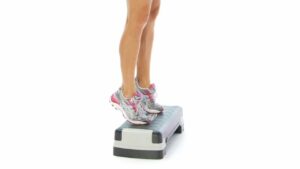 opening at the back. Hold onto the rails while you perform this exercise. Your heels should hang off the back edge of the step.
opening at the back. Hold onto the rails while you perform this exercise. Your heels should hang off the back edge of the step.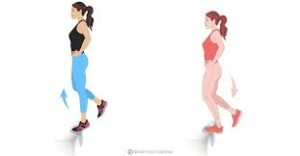 on the tip of the stair.
on the tip of the stair.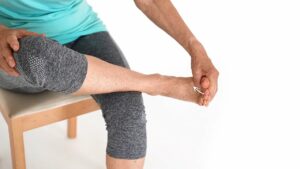 the floor.
the floor.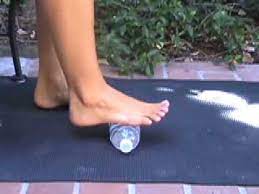 ready to start these foot exercises for plantar fasciitis.
ready to start these foot exercises for plantar fasciitis.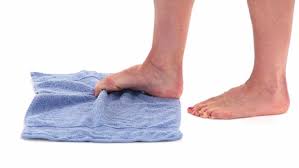 straight up and then rest your injured foot on the towel. Spread your toes apart.
straight up and then rest your injured foot on the towel. Spread your toes apart.